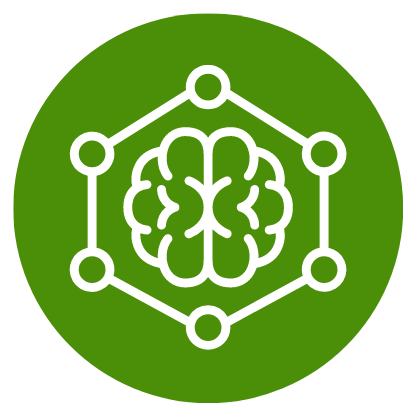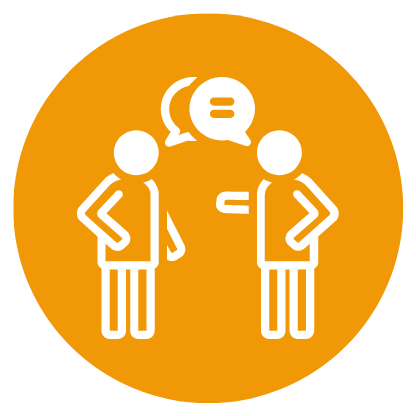Discover the biggest myth in education - do learning styles actually exist? Watch this video to find out!
The Biggest Myth In Education is a video by Derek Muller of Veritasium which challenges the long-held belief that individuals learn better when information is presented in accordance with their so-called 'learning style'. The video follows Derek as he interviews people on the street about learning styles, and then presents an experiment to test the idea. Through a randomized control trial and a survey of nearly 400 teachers, Derek shows that there is no scientific evidence to support the idea of learning styles, and that people actually learn better when they employ memory strategies, regardless of their learning style.
Learning Outline
1. There is an idea in education that everyone has their own preferred way of learning, their so-called learning style.
2. The most common learning style theory identifies four main learning styles: visual, auditory, reading-writing, and kinesthetic (VARK).
3. Teachers often believe that individuals learn better when they receive information in their preferred learning style.
4. To test this hypothesis, researchers have conducted randomized controlled trials with mixed results.
5. In one study, visualizers and verbalizers were assigned to either a text-based or picture-based lesson on electronics.
6. The study found that there was no difference in performance between those whose instruction was matched to their learning style and those whose was mismatched.
7. In another study, over 400 students were classified according to their learning style. The study found that students did not always stick to their preferred learning style.
Instructional Content
The Biggest Myth in Education video explores a commonly held belief in the educational system: that every student has a preferred learning style, and that if information is presented in accordance with this learning style, they will learn better. The video examines the most popular learning style theory, VARK, which identifies four main learning styles: visual, auditory, reading-writing, and kinesthetic. The video reveals that while it makes intuitive sense that people should learn better when taught in accordance with their learning style, scientific studies have been unable to confirm this.
The Biggest Myth in Education video offers an important insight for teachers, students, and parents alike. It shows that while learning styles can be helpful in understanding the way a student learns, the idea of “learning styles” should not be taken too seriously. Rather, it is important to recognize that everyone is different, and to find creative ways to deliver information in a way that is accessible and engaging to each individual student. Furthermore, this video emphasizes the importance of using memory strategies when learning, as they can often be more effective than relying on learning styles.
Overall, this video offers a valuable lesson in how to think about learning styles and teaching methods. It is an important reminder that learning styles are not set in stone, and that everyone has different ways of learning. By understanding the Biggest Myth in Education, teachers, students, and parents can become better equipped to create effective learning experiences and foster successful student outcomes.
Productivity
In order to improve productivity in learners, it is necessary to take into account learning strategies, critical thinking, and human communication. It is important to consider the individual learning styles of students and how they best learn. As seen in the video, the most common learning style theory identifies four main learning styles: visual, auditory, reading-writing, and kinesthetic or VARK for short. Visual learners learn best from images, demonstrations, and pictures. Auditory learners learn best from listening to an explanation. Reading-writing learners learn best from reading and writing. And kinesthetic learners learn best by doing, physically interacting with the world.
In order to properly utilize these learning styles to improve productivity, it is important to first identify the learning style of each of the students. This can be done through the VARK questionnaire and other methods. Once the learning styles of the students are identified, the next step is to teach them in accordance with their learning style. For example, if a student is a visual learner, they should be given materials that are presented visually, such as pictures or animations. For auditory learners, they should be given explanations or lectures that they can listen to. For reading-writing learners, they should be given textbooks to read or writing assignments. And for kinesthetic learners, they should be given hands-on activities that they can do.
In addition to utilizing different learning styles, it is also important to incorporate critical thinking and human communication into the learning process. Critical thinking can be fostered through activities such as problem solving, debate, and brainstorming. Human communication can be fostered through activities such as group discussion, role-play, and presentation. These activities can help students develop their problem-solving, communication, and collaboration skills, all of which are important for productivity.
Overall, in order to improve productivity in learners, it is important to consider their individual learning styles and incorporate different learning strategies, critical thinking, and human communication. By doing so, learners will be able to more effectively take in and process the material, leading to improved productivity.
Learning Strategies
The Biggest Myth In Education video and transcript highlights the misconception that everyone has their own preferred way of learning, their so-called learning style. It is true that everyone is different and can learn in their own way, but the evidence suggests that people learn better when they receive information in their preferred learning style. The video then goes on to explore the four main learning styles: visual, auditory, reading-writing, and kinesthetic or VARK for short. To take advantage of learning styles then teachers need to do two things: identify the learning style of each of their students and teach each student in accordance with their learning style.
However, a 2018 study conducted at a university in Indiana showed that students whose preferred learning style matched their instruction performed no better on the tests than those whose instruction was mismatched. This indicates that upskilling oneself to be more successful in personal growth and professional development is not as simple as adapting to one's preferred learning style. The key to success lies in developing the ability to adapt to different learning styles. This can be achieved by following a few simple steps. Firstly, individuals should identify their own learning style and use it to their advantage. Secondly, they should develop their skills in other learning styles to increase their adaptability and be able to understand different types of information. Finally, individuals should practice active learning, which involves actively engaging in the learning process and using strategies like creating stories and making lists to remember information. By following these steps, individuals can upskill themselves to be more successful in personal growth and professional development.
Critical Thinking
The Biggest Myth in Education is the idea that everyone has their own preferred way of learning - their so-called learning style. It is understandable why this idea makes intuitive sense; we know everyone is different and some people have better spacial reasoning, others have better listening comprehension, and some are better readers while others are good with their hands. However, research has suggested that there is little to no evidence to support the idea that teaching or learning in accordance with a learning style yields better performance than when they are mismatched.
Upskilling yourself to be more successful in personal growth and professional development often involves leveraging your learning style, but that doesn't mean it is the only way to learn. For example, a 2018 study of over 400 university students in Indiana revealed that their preferred learning style did not necessarily match their performance on tests. Other research has also suggested that when it comes to learning, memory strategies such as making associations, forming mental images, and repeating information can be more effective than relying on learning style.
Ultimately, upskilling yourself for success requires that you find the best approach for learning and understanding information. The Biggest Myth in Education highlights the need to look beyond a single learning style to explore the variety of approaches that can be used to learn and grow. Whether that is visual, auditory, reading-writing, or kinesthetic, or a combination of different styles, it is important to recognize that everyone has their own unique way of learning and that there is no 'one size fits all' approach.
Human Communication
Upskilling yourself to be more successful in personal growth and professional development is a worthwhile endeavor. The Biggest Myth in Education video provides a valuable insight into the importance of learning styles, and how they can be leveraged to help us reach our goals.
In the video, it is demonstrated that there are four main learning styles: visual, auditory, reading-writing and kinesthetic. Visual learners learn best from images, demonstrations and pictures, while auditory learners learn best from listening to an explanation. Reading-writing learners learn best from reading and writing, and kinesthetic learners learn best by doing and physically interacting with the world.
To take advantage of learning styles, teachers need to identify the learning style of each of their students and teach each student in accordance with their learning style. However, research suggests that this may not be as effective as initially thought. A survey of nearly 400 teachers from the UK and the Netherlands found that 90% of them believed that individuals learn better when they receive information in their preferred learning style. However, a 2018 study involving over 400 university students found that there was no significant improvement when the learning style matched the instruction.
It is important to note that learning styles are a preference. People may prefer one style over another, but this does not necessarily mean that it will lead to better performance. To upskill ourselves, it is important to identify our strengths and weaknesses and use the right tools or strategies to achieve our goals. For example, if you are a visual learner, you can use diagrams to better understand certain concepts. If you are an auditory learner, you may benefit from listening to audio recordings or lectures.
The Biggest Myth in Education video provides valuable insight into the importance of learning styles and how they can be used to upskill ourselves. While learning styles are a preference, they should not be relied upon blindly. It is important to identify our strengths and weaknesses and use the right tools or strategies to achieve our goals.
For Learners
Watching this video, The Biggest Myth In Education, is beneficial to any learner because it dives deep into the concept of learning styles, and outlines the differences between visual, auditory, reading-writing, and kinesthetic learners. It also explains why it is important to identify a person’s preferred learning style, and how teaching in accordance with it can improve their learning. Furthermore, this video presents a “What’s in it for me” approach to learning, which can help you as a learner to better understand the concept of learning styles and how to apply them in your own learning.
The detriment of not watching this video is that you will remain unaware of the concept of learning styles, and how to apply them to improve learning. This can limit your personal growth and professional development, as you will be unable to effectively optimize how you learn, which can prevent you from reaching your full potential. Moreover, you won’t be able to take advantage of the “What’s in it for me” approach to learning which could help you to better understand and apply the concepts of learning styles.
Watching this video can benefit you, your peers, and the world because it will help to create a more informed society of learners. When you understand the concept of learning styles, you can apply them to enhance your own learning, as well as help others to do the same. This can help to create an informed and better educated society, which can have a positive impact on the world.
For Employers
One of the biggest myths in education is that everyone has their own preferred way of learning and should be taught in accordance with their learning style. However, research has shown that there is no strong evidence to support this notion. As an employer, watching this video will not only provide a better understanding of the current situation, but will also help differentiate yourself and your team from your competitors.
By learning the content of this video, employers will have a better understanding of how to effectively teach their employees and customers. Instead of relying on the traditional learning style approach, employers can use alternative methods to ensure their employees have a better understanding of the material. They can use visuals, demonstrations, and pictures to visually explain the material. They can also use listening comprehension to help employees understand the material better. Additionally, reading and writing can be a great way to help employees learn, as well as providing hands-on experiences for kinesthetic learners.
The content of this video will also help employers better understand how their customers and clients perceive them and their products. By understanding the concept of learning styles, employers can provide their customers with a better understanding of their products and services. This can help them make more informed decisions about their purchases and build better relationships with their customers.
By learning the content of this video, employers can differentiate themselves from their competitors and provide their customers and employees with a better understanding of their products and services. This will not only help them succeed in the present, but it will also help them succeed in the future as they will have a better understanding of how to effectively teach their employees and customers.
Learning Design
The competencies of Learning Strategies, Critical Thinking, and Human Communication are essential for the course on Productivity because they provide the student with the skills needed to effectively and efficiently manage their time and resources. Learning Strategies help students recognize and implement effective methods of absorbing and retaining information. Critical Thinking allows the student to analyze and evaluate information in order to understand complex concepts and make informed decisions. Human Communication allows the student to effectively interact and collaborate with others.
To help build these competencies, the course should use a blended learning model that combines face-to-face instruction with online activities and resources. This allows students to learn at their own pace and to take advantage of the various resources available to them. Students should be encouraged to explore the different learning strategies and to practice critical thinking skills in order to gain a better understanding of the material. The teacher should also provide opportunities for group activities and discussions, so that students can practice their communication skills in a collaborative setting. Finally, the teacher should provide frequent feedback on the students’ progress in order to help them refine their skills and stay motivated.
Career Path
Completing a course in Productivity can be a great way to level up your employability, promotability, and purposeful. Learning Strategies, Critical Thinking, and Human Communication are essential skills that employers and hiring managers look for when reviewing resumes and conducting interviews. By equipping yourself with these competencies, you will be setting yourself apart from other applicants and be able to demonstrate to employers that you are a knowledgeable and well-rounded professional.
Meaning
"The biggest myth in education" is that everyone has their own preferred way of learning. While it may make sense to believe that people should learn better in their own preferred style, the reality is that learning styles are no more than a preference. A 2018 study found that when students were randomly assigned to a visual or textual lesson, there was no difference in their performance on tests. This suggests that it doesn't matter if the material is presented in accordance with a learning style. What matters is how well the material is understood and how well the learner engages with it. This is important for employers to understand because it means that they should focus on finding people who are able to engage with and understand the material instead of focusing on learning styles.
Takeaway
The most important key takeaway from this video is that learning styles do not necessarily determine how well a person will understand and retain a lesson. Studies have found that presentation style does not matter as much as memory strategies employed by the learner.










 7 Creds - Productivity
7 Creds - Productivity



